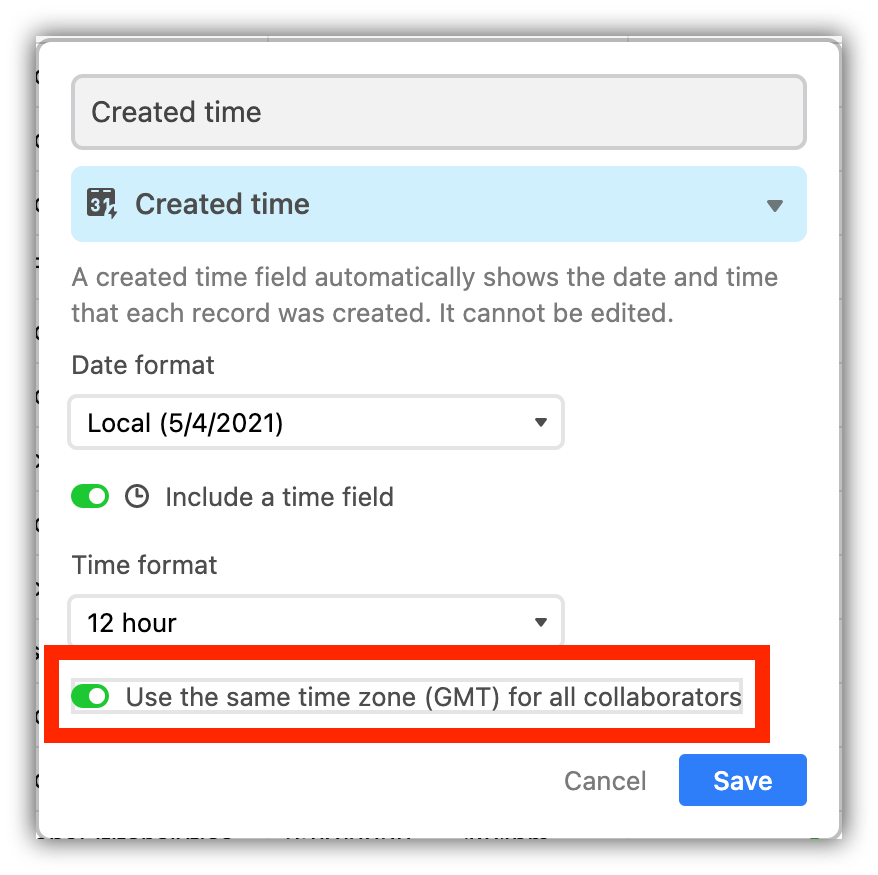
Airtable find formula how to#
This article is part of a guided course that helps you learn how to use Airtable formulas. On the new table, create a Rollup field that sums the number field with the Sum(values) function.Convert the field to a linked record field that links to a new table.You can do this quickly by using the fill-handle. Create an additional field, and populate every record in the field with the same value.You can sum an entire field by taking the following steps: You can sum a range of cells by selecting a cell, holding SHIFT, and then clicking a different cell. Use only the time of the DATETIME field in a formula. Using linked records and a rollup field Using the summary bar.There are two alternatives however to finding the sum of a field:

Because formulas apply across fields (or in other words, to a specific record), and not vertically down fields (like you can in a traditional spreadsheet application), you cannot use a formula in a field to sum the amount of that field. You can use this function to individually reference numbers or to reference a field name that contains numeric values.Ī common question is if it's possible to sum an entire field of numbers. However, it can also support many other field types including, but not limited to, date, number, autonumber, and formula field types.

This is equivalent to manually adding each value using the + operator, like Number 1 + Number 2. Add If you use a base to track invoicing, you can total up the services for each invoice across multiple fieldsto keep track of the total a client owes for each invoice. In Airtable, the primary field is most often a text type field. The SUM() function allows you to find the sum, or total, of any amount of numeric values. In the example below, you can easily find the largest of several payments by using this formula: MAX( ). These two functions work similarly to return either the largest or smallest of given numbers. Of course, you can simply scroll through each section to learn the detail about the functions above as well. Hover over any of them to learn what they do and click them to jump to more detail. To introduce you to numeric functions, we'll cover the following functions. This article is part of a guided course which you can view here. These functions go beyond the calculations you can do with the four numeric operators to give you more ways to read, transform, and manipulate numeric values. Airtable has functions called FIND() and SEARCH(), which are very similar and only differ in how they react if the phrase is not found within your search string. They allow you to do complex calculations, manipulate data, and automate your workflows. In this article, we'll take a basic look at functions that work exclusively with numbers. Airtable Formulas are the bread and butter of Airtable. Let’s say you want to check on the status of various tasks you’re managing.Different functions work with different data types. This calls up a box where you can write your formula. Give it a descriptive name, then choose the field type “Formula.” You can do so by scrolling to the right of your base in any grid view and clicking the "+" icon. Formula fields use both operators (think your basic mathematical symbols like + or ) and functions (more advanced calculations, such as parsing dates and times, figuring out averages, and rounding). To use an IF function in Airtable, you’ll need to create a new field. In Airtable, an IF function lets you compare: Applying an IF function can give you that insight, showing which inputs meet the $50,000 threshold and which do not. You’d like to know which of them have budgets over $50,000 and which are under.

Here’s another example that might apply to your organization: say you’re in the middle of several large marketing campaigns. If the input is false and you choose not to follow the road, you don’t see the wizard at all. For example: “If I follow the yellow brick road, I’ll get to see the Wizard of Oz.” If an input is true, you follow the yellow road and see the wizard. The idea of “if” comes up in all kinds of logical choices. In a formula, they let you compare inputs and take one action if the result is true, or another action if the result is false.


 0 kommentar(er)
0 kommentar(er)
